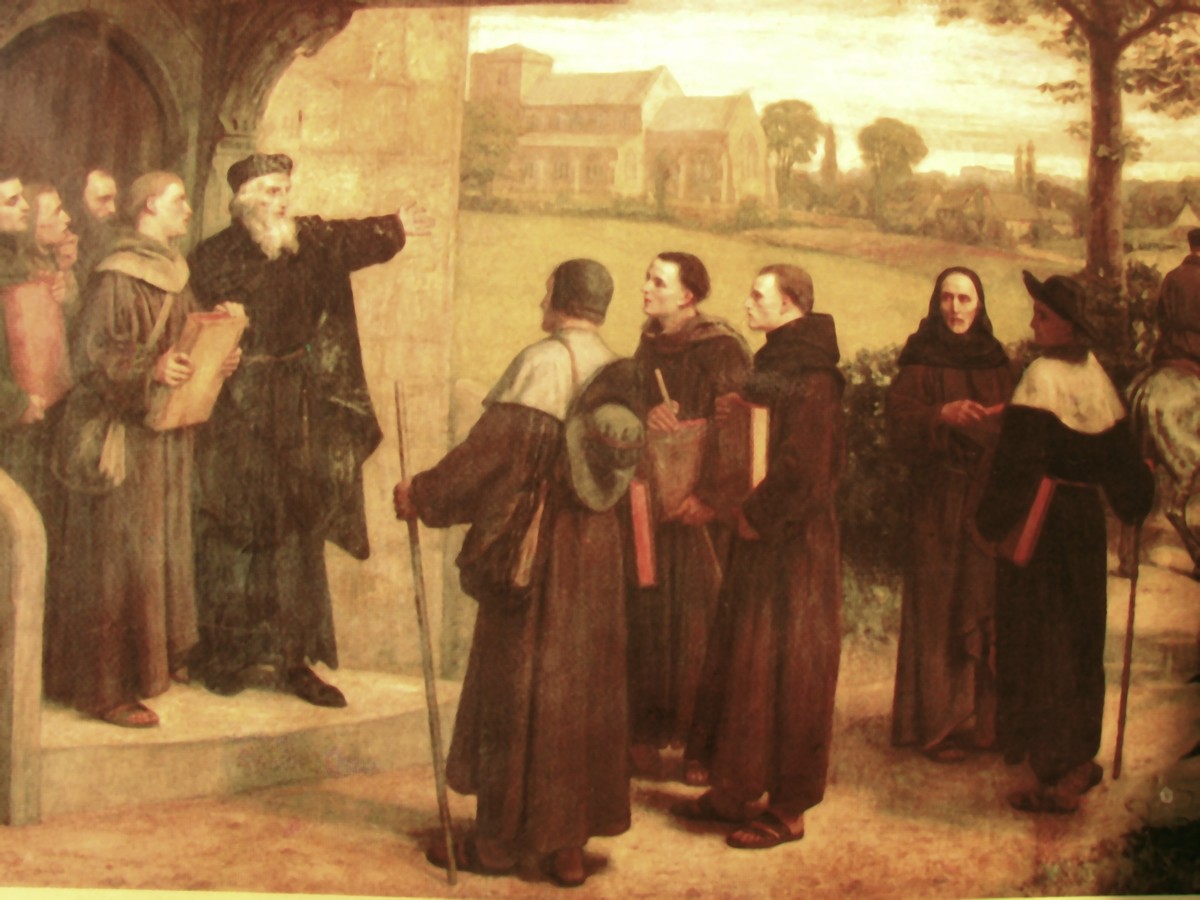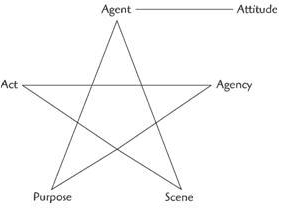|
Consubstantiation
Consubstantiation is a Christian theological doctrine that (like transubstantiation) describes the real presence of Christ in the Eucharist. It holds that during the sacrament, the substance of the body and blood of Christ are present alongside the substance of the bread and wine, which remain present. It was part of the doctrines of Lollardy, and considered a heresy by the Roman Catholic Church. It was later championed by Edward Pusey of the Oxford Movement, and is therefore held by many high church Anglicans. Development In England in the late 14th century, there was a political and religious movement known as Lollardy. Among much broader goals, the Lollards affirmed a form of consubstantiation—that the Eucharist remained physically bread and wine, while becoming spiritually the body and blood of Christ. Lollardy survived up until the time of the English Reformation. Literary critic Kenneth Burke's dramatism takes this concept and utilizes it in secular rhetorical theory ... [...More Info...] [...Related Items...] OR: [Wikipedia] [Google] [Baidu] |
Eucharistic Theology
Eucharistic theology is a branch of Christian theology which treats doctrines concerning the Holy Eucharist, also commonly known as the Lord's Supper. It exists exclusively in Christianity and related religions, as others generally do not contain a Eucharistic ceremony. In the Gospel accounts of Jesus' earthly ministry, a crowd of listeners challenges him regarding the rain of manna before he delivers the famous Bread of Life Discourse (John 6:22–59), and he describes himself as the "True Bread from Heaven". The aforementioned Bread of Life Discourse occurs in the Gospel of John, John 6:30–59. Therein, Jesus promises to give his flesh and blood, which he states will give eternal life to all who receive it. In John 6:53 (RSV), Jesus says, "Truly, truly, I say to you, unless you eat the flesh of the Son of man and drink his blood, you have no life in you"; in verses 54–55, he continues: "he who eats my flesh and drinks my blood has eternal life, and I will raise him up at ... [...More Info...] [...Related Items...] OR: [Wikipedia] [Google] [Baidu] |
Real Presence Of Christ In The Eucharist
The real presence of Christ in the Eucharist is the Christian doctrine that Jesus Christ is present in the Eucharist, not merely symbolically or metaphorically, but in a true, real and substantial way. There are a number of Christian denominations that teach that Christ is truly present in the Eucharist, including Catholicism, Eastern Orthodoxy, Oriental Orthodoxy, the Church of the East, the Moravian Church, Lutheranism, Anglicanism, Methodism, Irvingism and Reformed Christianity. The differences in the teachings of these Churches primarily concern "the mode of Christ's presence in the Lord’s Supper". The Real Presence is rejected or interpreted in light of "remembrance" (per certain translations of the New Testament) by other Protestants, including General Baptists, Anabaptists, the Plymouth Brethren, some non-denominational Christian churches, as well as those identifying with liberal Christianity, segments of the Restoration Movement, and Jehovah's Witnesses ... [...More Info...] [...Related Items...] OR: [Wikipedia] [Google] [Baidu] |
Eucharist
The Eucharist (; from Greek , , ), also known as Holy Communion and the Lord's Supper, is a Christian rite that is considered a sacrament in most churches, and as an ordinance in others. According to the New Testament, the rite was instituted by Jesus Christ during the Last Supper; giving his disciples bread and wine during a Passover meal, he commanded them to "do this in memory of me" while referring to the bread as "my body" and the cup of wine as "the blood of my covenant, which is poured out for many". The elements of the Eucharist, sacramental bread ( leavened or unleavened) and wine (or non-alcoholic grape juice), are consecrated on an altar or a communion table and consumed thereafter, usually on Sundays. Communicants, those who consume the elements, may speak of "receiving the Eucharist" as well as "celebrating the Eucharist". Christians generally recognize a special presence of Christ in this rite, though they differ about exactly how, where, and when Chri ... [...More Info...] [...Related Items...] OR: [Wikipedia] [Google] [Baidu] |
Sacramental Union
Sacramental union (Latin: ''unio sacramentalis''; Martin Luther's German Language, German: ''Sacramentliche Einigkeit'';''Weimar Ausgabe'' 26, 442.23; ''Luther's Works'' 37, 299-300. German: ''sakramentalische Vereinigung'') is the Lutheranism, Lutheran theology, theological doctrine of the Real Presence of the body and blood of Jesus, Christ in the Christianity, Christian Eucharist (see Eucharist in Lutheranism). Type of union The sacramental union is distinguished from the other "unions" in theology like the "Hypostatic union, personal union" of the two natures in Jesus Christ, the "mystical union" of Christ and his Christian Church, Church, and the "natural union" in the human person of Human body, body and soul. It is seen as similar to the personal union in the analogue of the uniting of the two perfect natures in the person of Jesus Christ in which both natures remain distinct: the integrity of the bread and wine remain though united with the body and the blood of Christ. ... [...More Info...] [...Related Items...] OR: [Wikipedia] [Google] [Baidu] |
Transubstantiation
Transubstantiation (Latin: ''transubstantiatio''; Greek: μετουσίωσις '' metousiosis'') is, according to the teaching of the Catholic Church, "the change of the whole substance of bread into the substance of the Body of Christ and of the whole substance of wine into the substance of the Blood of Christ". This change is brought about in the eucharistic prayer through the efficacy of the word of Christ and by the action of the Holy Spirit. However, "the outward characteristics of bread and wine, that is the 'eucharistic species', remain unaltered". In this teaching, the notions of "substance" and "transubstantiation" are not linked with any particular theory of metaphysics. The Roman Catholic Church teaches that, in the Eucharistic offering, bread and wine are changed into the body and blood of Christ. The affirmation of this doctrine was expressed, using the word "transubstantiate", by the Fourth Council of the Lateran in 1215. It was later challenged by various 14th- ... [...More Info...] [...Related Items...] OR: [Wikipedia] [Google] [Baidu] |
Impanation
Impanation (Latin: ''impanatio'', "embodied in bread") is a high medieval theory of the real presence of the body of Jesus Christ in the consecrated bread of the Eucharist that does not imply a change in the substance of either the bread or the body. This doctrine, apparently patterned after Christ's Incarnation (God is made flesh in the Person of Jesus Christ), is the assertion that "God is made bread" in the Eucharist. Christ's divine attributes are shared by the eucharistic bread via his body. This view is similar but not identical to the theory of consubstantiation associated with Lollardy. It is considered a heresy by the Roman Catholic Church and is also rejected by classical Lutheranism. 14–15, 64; cf. also Charles P. Krauth, ''The Conservative Reformation and It ... [...More Info...] [...Related Items...] OR: [Wikipedia] [Google] [Baidu] |
Lutheran Eucharistic Theology
Lutheranism is one of the largest branches of Protestantism, identifying primarily with the theology of Martin Luther, the 16th-century German monk and reformer whose efforts to reform the theology and practice of the Catholic Church launched the Protestant Reformation. The reaction of the government and church authorities to the international spread of his writings, beginning with the ''Ninety-five Theses'', divided Western Christianity. During the Reformation, Lutheranism became the state religion of numerous states of northern Europe, especially in northern Germany, Scandinavia and the then-Livonian Order. Lutheran clergy became civil servants and the Lutheran churches became part of the state. The split between the Lutherans and the Roman Catholics was made public and clear with the 1521 Edict of Worms: the edicts of the Diet condemned Luther and officially banned citizens of the Holy Roman Empire from defending or propagating his ideas, subjecting advocates of Lutheranism to ... [...More Info...] [...Related Items...] OR: [Wikipedia] [Google] [Baidu] |
Lollardy
Lollardy, also known as Lollardism or the Lollard movement, was a proto-Protestant Christian religious movement that existed from the mid-14th century until the 16th-century English Reformation. It was initially led by John Wycliffe, a Catholic theologian who was dismissed from the University of Oxford in 1381 for criticism of the Roman Catholic Church. The Lollards' demands were primarily for reform of Western Christianity. They formulated their beliefs in the Twelve Conclusions of the Lollards. Etymology ''Lollard'', ''Lollardi'', or ''Loller'' was the popular derogatory nickname given to those without an academic background, educated (if at all) only in English, who were reputed to follow the teachings of John Wycliffe in particular, and were certainly considerably energized by the translation of the Bible into the English language. By the mid-15th century, "lollard" had come to mean a heretic in general. The alternative, "Wycliffite", is generally accepted to be a mor ... [...More Info...] [...Related Items...] OR: [Wikipedia] [Google] [Baidu] |
Anglican
Anglicanism is a Western Christian tradition that has developed from the practices, liturgy, and identity of the Church of England following the English Reformation, in the context of the Protestant Reformation in Europe. It is one of the largest branches of Christianity, with around 110 million adherents worldwide . Adherents of Anglicanism are called ''Anglicans''; they are also called ''Episcopalians'' in some countries. The majority of Anglicans are members of national or regional ecclesiastical provinces of the international Anglican Communion, which forms the third-largest Christian communion in the world, after the Roman Catholic Church and the Eastern Orthodox Church. These provinces are in full communion with the See of Canterbury and thus with the Archbishop of Canterbury, whom the communion refers to as its ''primus inter pares'' (Latin, 'first among equals'). The Archbishop calls the decennial Lambeth Conference, chairs the meeting of primates, and is ... [...More Info...] [...Related Items...] OR: [Wikipedia] [Google] [Baidu] |
Dramatism
Dramatism, a communication studies theory, was developed by Kenneth Burke as a tool for analyzing human relationships through the use of language. Burke viewed dramatism from the lens of logology, which studies how people's ways of speaking shape their attitudes towards the world. According to this theory, the world is a stage where all the people present are actors and their actions parallel a drama. Burke then correlates dramatism with motivation, saying that people are "motivated" to behave in response to certain situations, similar to how actors in a play are motivated to behave or function. Burke discusses two important ideas – that life is drama, and the ultimate motive of rhetoric is the purging of guilt. Burke recognized guilt as the base of human emotions and motivations for action. As cited in "A Note on Burke on "Motive"", the author recognized the importance of "motive" in Burke's work. In "Kenneth Burke's concept of motives in rhetorical theory", the authors mentione ... [...More Info...] [...Related Items...] OR: [Wikipedia] [Google] [Baidu] |
Logology (theology)
In theology, logology deals with the verbal nature of doctrines in suggesting a further possibility that there may be analogies between "logology" and theology. According to literary theorist Kenneth Burke, logology works through the forms of religious language and its functions in the political sphere when rhetoric acts as a symbolic action. If it is true that language is symbolic, then speech is the result of man acting as a symbol-using animal, making it necessary to understand that logology can also be defined as the study of "words about words". In rhetoric Rhetoric () is the art of persuasion, which along with grammar and logic (or dialectic), is one of the three ancient arts of discourse. Rhetoric aims to study the techniques writers or speakers utilize to inform, persuade, or motivate par ..., logology focuses not in finding the truth or falseness of a statement or phrase, but rather why that particular word or string of words was chosen and how those choices inf ... [...More Info...] [...Related Items...] OR: [Wikipedia] [Google] [Baidu] |





.jpg)


